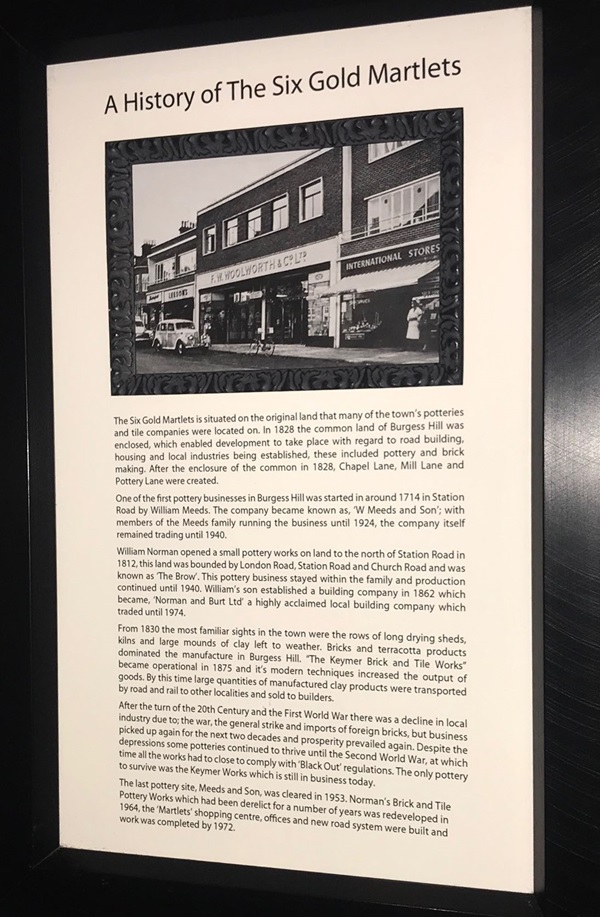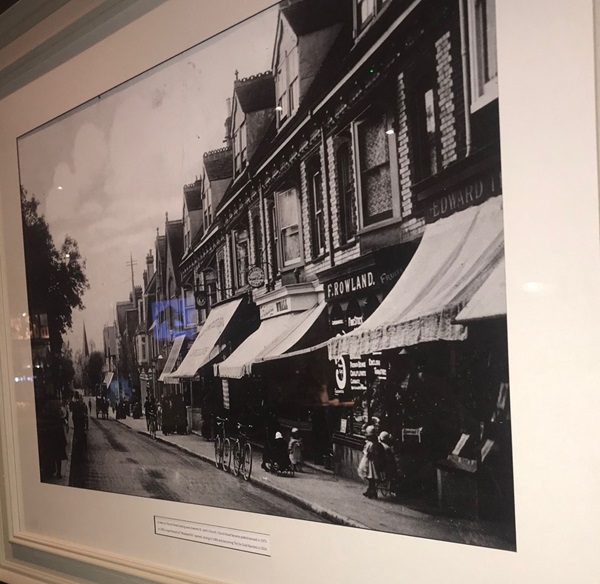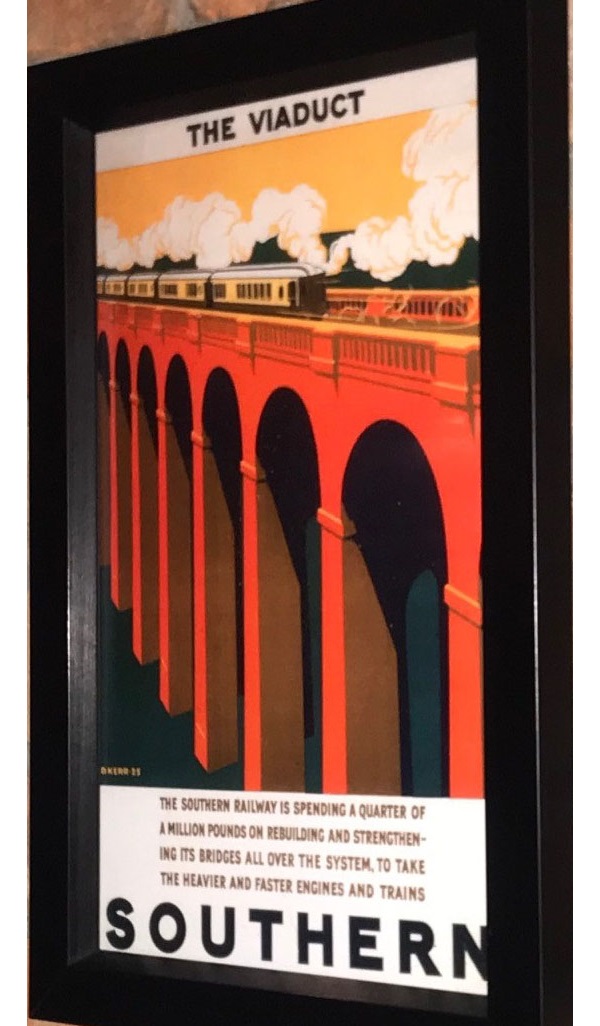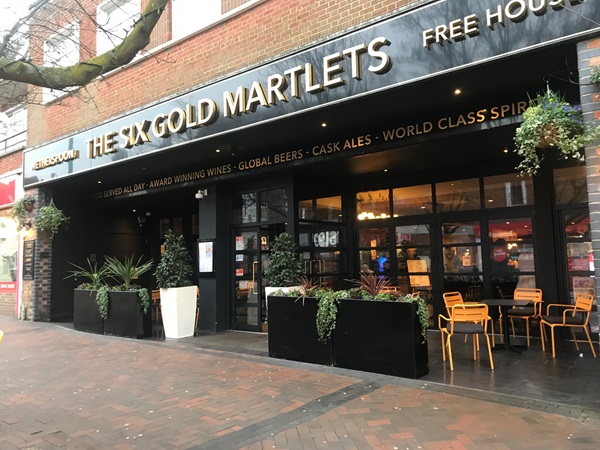Pub history
The Six Gold Martlets
Church Walk was originally the lower part of Church Road, pedestrianised and renamed in 1973. This long, straight thoroughfare is the town’s main shopping street. Its focal point (opening in 1972) is Martlets outdoor shopping centre at the rear of the Wetherspoon pub. Its name refers to the six gold martlets (similar to swallows) which form the heraldic shields of East and West Sussex, with Burgess Hill mainly on the West Sussex side of the border between the two counties.

Church Walk was originally the lower part of Church Road, pedestrianised and renamed in 1973. This long, straight thoroughfare is the town’s main shopping street. Its focal point (opening in 1972) is Martlets outdoor shopping centre at the rear of the Wetherspoon pub. Its name refers to the six gold martlets (similar to swallows) which form the heraldic shields of East and West Sussex, with Burgess Hill mainly on the West Sussex side of the border between the two counties.
A photograph and text about The Six Gold Martlets

The text reads: The Six Gold Martlets is situated on the original land that many of the town’s potteries and tile companies were located on. In 1828, the common land of Burgess Hill was enclosed, which enabled development to take place with regard to road-building, housing and local industries being established. These included pottery and brick-making. After the enclosure of the common in 1828, Chapel Lane, Mill Lane and Pottery Lane were created.
One of the first pottery businesses in Burgess Hill was started in around 1714 in Station Road by William Meeds. The company became known as W Meeds and Son, with members of the Meeds family running the business until 1924. The company itself remained trading until 1940.
William Norman opened a small pottery works on land to the north of Station Road in 1812. This land was bounded by London Road, Station Road and Church Road and was known as The Brow. This pottery business stayed within the family, and production continued until 1940. William’s son established a building company in 1862 which traded until 1974.
From 1830, the most familiar sights in the town were the rows of long drying sheds, kilns and large mounds of clay left to weather. Bricks and terracotta products dominated the manufacture in Burgess Hill. The Keymer Brick and Tile Works became operational in 1875, and its modern techniques increased the output of goods. By this time, large quantities of manufactured clay products were transported by road and rail to other localities and sold to builders.
After the turn of the 20th century and the First World War, there was a decline in local industry due to the war, the general strike, and imports of foreign bricks, but business picked up again for the next two decades and prosperity prevailed again. Despite the depressions, some potteries continued to thrive until the Second World War, at which time all the works had to close to comply with ‘Black Out’ regulations. The only pottery to survive was the Keymer Works, which is still in business today.
The last pottery site, Meeds and Son, was cleared in 1953. Norman’s Brick and Tile Pottery Works, which had been derelict for a number of years, was redeveloped in 1964. The ‘Martlets’ shopping centre, offices and new road system were built, and work was completed by 1972.
A photograph of Church Road, looking across towards St John’s Church

An old poster for Southern Railway

External photograph of the building – main entrance





